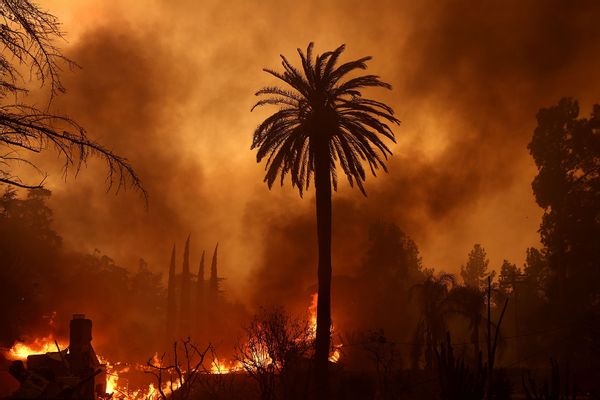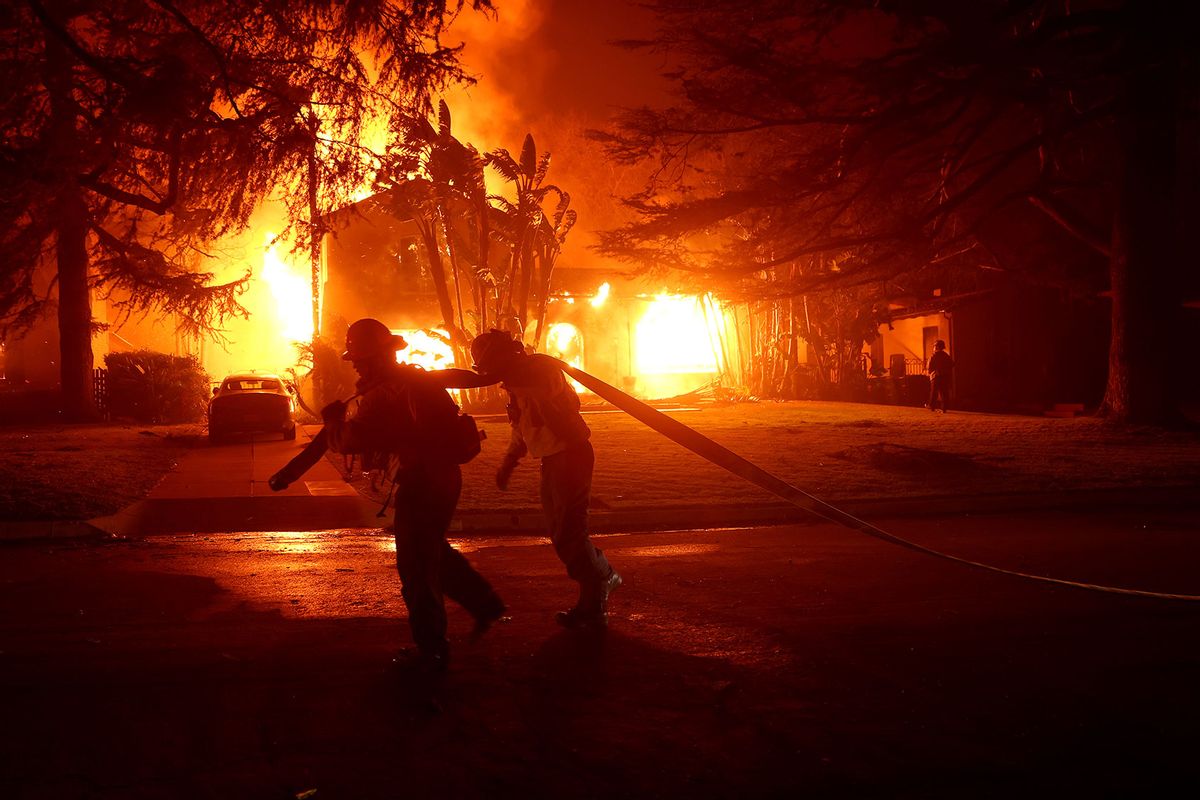I spent most of the evening on January 7, a Christmas Day celebrated by Orthodox Christians around the world, monitoring local news and emergency apps for evacuation alerts for the Los Angeles area. The horrific images of the Pacific Palisades fires were only the start, the city officials warned. Our neighborhood areas were advised to stay put, shelter in place as the night winds were picking up. As the night progressed, the fiery circle around us was getting closer and closer.
What many people outside LA don’t realize is that it’s not one big city. It’s many sizable cities, with their own budgets and mayors encompassing 29 separate fire departments; Beverly Hills, Glendale and Pasadena–LA County is vast. And it was surreal to watch the metro area, with so many resources, still struggling to find enough firefighters and water to contain the fire that was raging through neighborhoods, engulfing entire homes, forcing thousands to flee, going so far inland into the city that few predicted.
The scope and speed of the fires left the city’s richest people feeling powerless.
“There’s no water in the fire hydrants. The firefighters are there, and there's nothing they can do," billionaire real estate developer Rick Caruso said, as reported by the Los Angeles Times. "We've got neighborhoods burning, homes burning, and businesses burning. It should never happen."
We are all just one weather calamity away from becoming displaced.
What the sensationalized news coverage of the fire doesn’t capture is that this is not a freak event — this is the new normal. Scientists have been predicting these deadly conditions for decades. As one writer pointed out on X on Tuesday night, “this is how people turn into climate refugees.”
As Salon has previously reported, nowhere will be safe from the effects of global heating. We are all just one weather calamity away from becoming displaced.
While I previously covered several war zones in Somalia, Egypt and Ukraine, I never had to pack a “go bag” before. As I Googled a list of recommended items to pack, my husband was prepping our car in case we had to evacuate our toddler, a dog and two cats in the middle of the night.
This is already one of the biggest windstorms LA has seen in over a decade, with the extent of devastation just coming into focus. At least five people have died, 1,100 structures destroyed across 15,000 acres burned and tens of thousands evacuated.
Want more health and science stories in your inbox? Subscribe to Salon's weekly newsletter Lab Notes.
As California Gov. Gavin Newsom noted in his remarks earlier in the evening on Tuesday and has been saying for years, there are no more fire seasons: The wildfire risk is year-round, a result of rampant fossil fuel use that is cooking our planet.
“The fires in Los Angeles are a stark reminder of how extreme weather increases fire risk. It is likely that heavy rains from El Niño last year fuelled vegetation growth, which has since dried out during the recent prolonged dry spell and, along with strong winds, creating perfect conditions for wildfires to spread,” Dr. Maria Lucia Ferreira Barbosa, a wildfire scientist at the U.K. Centre for Ecology and Hydrology, explained for the Science Media Centre. “There is projected to be a global increase of extreme fires of up to 14 per cent by 2030, 30 per cent by 2050 and 50 per cent by the end of the century.”
 The Eaton Fire burns through a neighborhood on January 08, 2025 in Altadena, California. (Justin Sullivan/Getty Images)The Santa Ana winds, some reaching 90 miles per hour, coupled with dry conditions and LA’s mountainous terrain made containment that much more difficult. They also exposed gaps in the city’s infrastructure and disaster preparedness.
The Eaton Fire burns through a neighborhood on January 08, 2025 in Altadena, California. (Justin Sullivan/Getty Images)The Santa Ana winds, some reaching 90 miles per hour, coupled with dry conditions and LA’s mountainous terrain made containment that much more difficult. They also exposed gaps in the city’s infrastructure and disaster preparedness.
By Wednesday morning, the winds started to calm down, but five fires were still raging.
I opened the door to get the morning paper, and could see gray smoke clouds all hovering around us. The coverage on social media made it look like we woke up in Pompeii after the volcanic eruption.
With parts of Los Angeles still burning and entire neighborhoods like Pacific Palisades completely torched, social media is flooded with examples of people dealing with the fires and their aftermath while struggling to get any help.
“Power lines sparking against trees. Neighbor and I have been trying to call 911 and Fire Department for 45 min with no answer (as instructed by Power Company),” Kyle Zink posted on X Tuesday night. “Yes, a lot is going on, but the city is failing us.”
And Los Angeles is supposed to be one of the cities better prepared for climate disasters. To the city governments’ credit, the number of casualties to date have been limited given the radius of the fires and the amount of damage inflicted.
But it did not feel like we were well prepared Tuesday night.
We need your help to stay independent
And less than half of major U.S. cities with populations over 300,000 had climate adaptation plans, as of May 2020. A recent study by Zurich Insurance Group and Economist Impact found that globally 80% of respondents think that cities are not prepared to handle climate change.
The political blame games have begun, with the incoming president already accusing Newsom for failing to pump more water.
“The chronic under-investment in the city of Los Angeles in our public infrastructure and our public safety partners was evident and on full display over the last 24 hours,” Los Angeles City Councilmember Traci Park, who represents Pacific Palisades, said at a Wednesday news conference, as reported by the Los Angeles Times.
On Wednesday night, another fire broke out in the Hollywood Hills, prompting more evacuations. We may be tired of political debates or doomsday scenarios from climate scientists, but the impacts from a changed climate are real and they're here now, not in some distant future. When it comes to critical issues like access to water, safe infrastructure and disaster preparedness, it’s time to put our political differences aside and get to work.



Shares